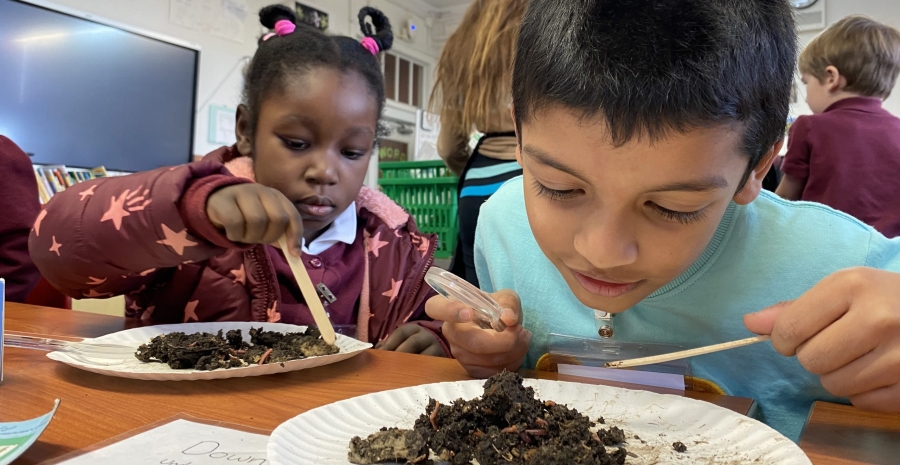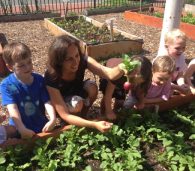Exploring Worms in Our Classrooms

Before leaving the garden at Langley Elementary, a student, Rory, looked back and shouted, “Thank you for what you do for our plants!,” but he wasn’t talking to his FoodPrints teacher or classmates, he was talking to the worms. In the FRESHFARM FoodPrints program, worms are a valued part of classroom learning and garden exploring.
Worms Teach Us Science
Why are worms important for students to learn about? By including them into the routine of FoodPrints classes, we build familiarity with the value of composting. We have “worm bins” in our classrooms, where food scraps, recycled paper, and compostable plates feed our unlikely class pets. Worms eat and break down food scraps and organic matter into “castings,” a nutrient rich soil amendment. Worms, which live in the dirt, are an overlooked key player in having healthy, and, in turn, growing healthy plants. By having worm bins in the classroom, students gain experience with creating soil and composting.
Students learn about compost through practice with their worm bins, which stirs up great excitement as they care for the worms. Often while cooking together, students will think of how they will use their food scraps. When cutting parsley at Francis Stevens Elementary, one student remarked, “We are cutting it for the worms and for us!”
Alongside practicing composting, our FoodPrints Curriculum covers soil health and the essential role of worms. Through hands-on experiences with worms, students see how important they are to our gardens. At Powell Elementary, a Logan excitedly shared, “They take care of the environment,” when spotting worms in his school garden.
Worms Teach Us Empathy
Apart from how they help our Earth, students also practice social-emotional learning when exploring worms. Students learn about their anatomy and learn how to properly care for and handle these creatures. This allows students to practice empathy and bravery. For instance, a student at Francis Stevens, King, was at first very nervous to put his hand out to touch the worm. With time, he overcame his anxiety and was able to hold one alongside his classmates. Students often remind each other to be gentle and quiet with the worms, remembering their own sensitivities to touch and sound. Worms help students get out of their comfort zones.
When the worms come out in our gardens, students practice handling them with great care and empathy. When there are food scraps from cooking in our classroom kitchens, students ask “Can we feed this to the worms?” In this way, our students are caring for living beings, with first-hand understanding of their place in taking care of our planet and each other.


